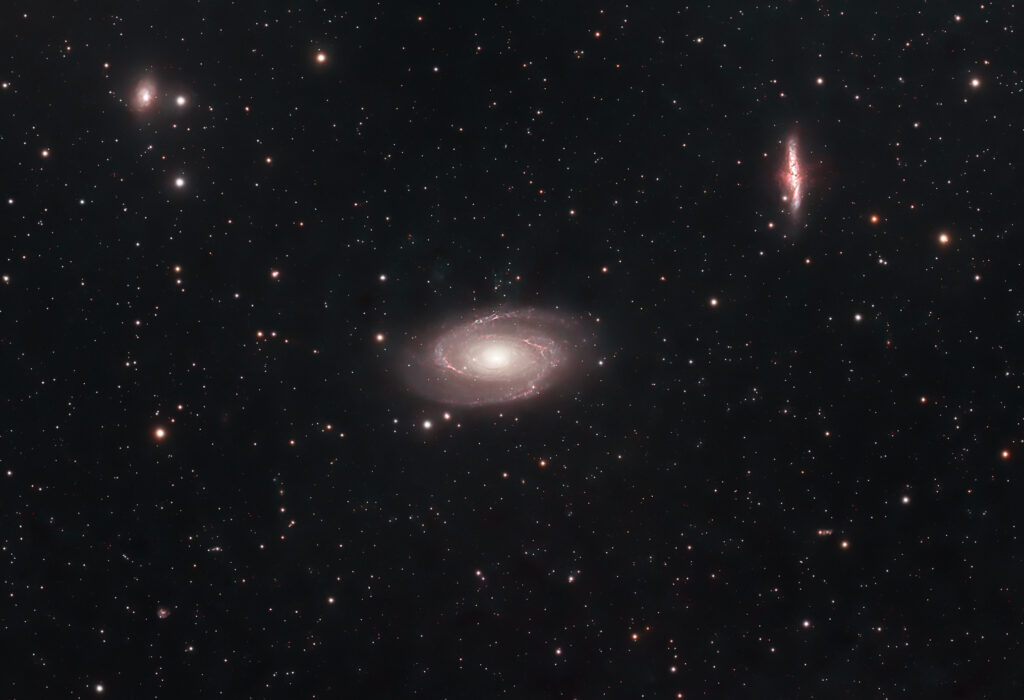
Astrobin: https://www.astrobin.com/z6r6gb/G/
During 2021 and 2022 I took a good number of subframes focusing on M81 and M82 field and I planned to integrate RGB channels with Ha and Oiii narrowband contribute.
Being a follower of John Rista short time DSO photography approach, RGB channel subframes I recorded at 60″, Halpha and Oiii subframes at 180″, William Optics Redcat51 and ASI1600mm Pro at -20 Celsius, Gain 139.
For Rista excellent studies, please cfr. https://jonrista.com/the-astrophotographers-guide/the-zwo-asi1600-guide/the-zwo-asi1600/preliminary-analysis/ and https://www.cloudynights.com/topic/578198-short-exposure-time-asi-1600mm-cool/ both on 02/08/2023.
After standard calibration, cosmetic correction by dark-master, star registration and winsorized sigma clipping integration, I obtained masterframe for each channel recorded.
Channel combination of RGB generated a good integration which I played with Ha and Oiii masters to Dynamic BG removal, solving (and annotated transparent layer version for further work), Spectrophotometric Color Calibration (just RGB) deconvolution and denoising.
I then proceed by starXterminator in starless and stars version of each master to work properly ‘till putting them back by PixelMath, obtaining a pretty good RGB master
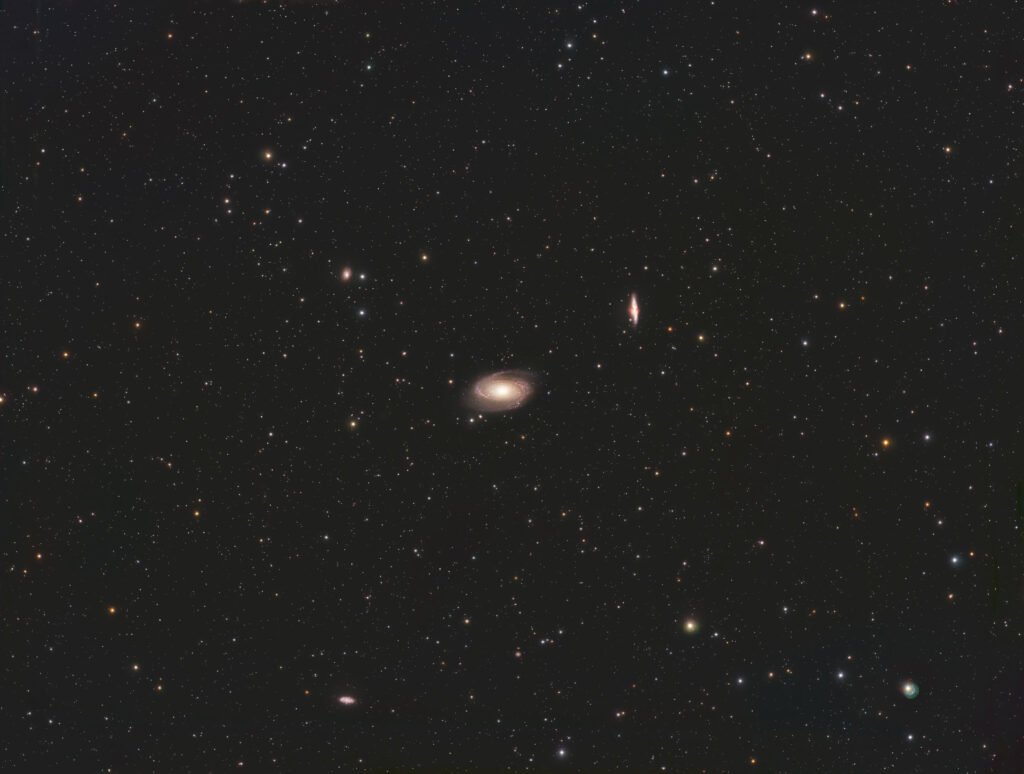
with ready-to-go Halpha and Oiii narrowband master to integrate within:
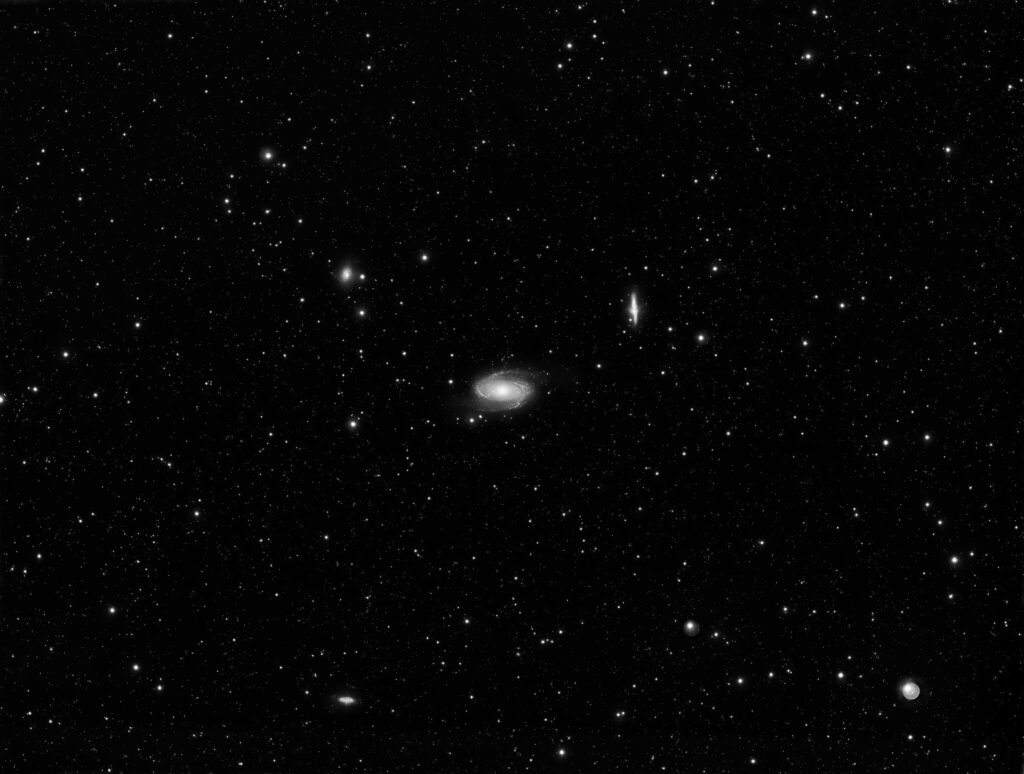
H alpha channel to be associated to R channel while Oiii to differently be integrated with both G and B channels.
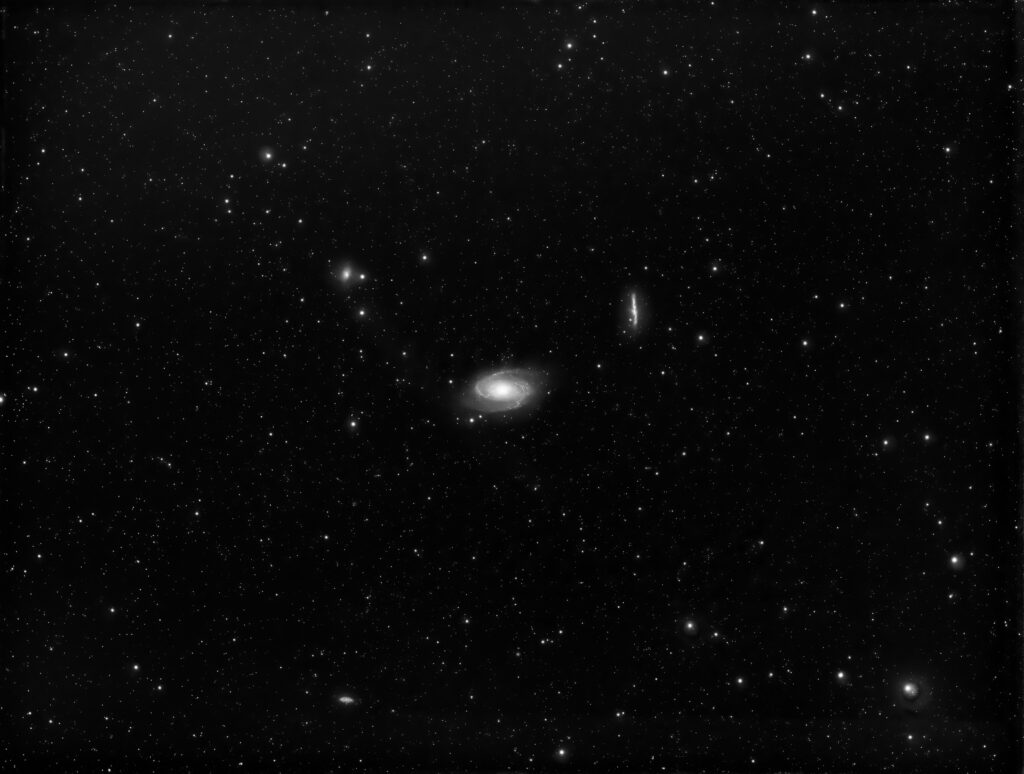
Narrowband with RGB integration produced a pretty good result which, in turns, I little worked over separating again stars and starless sub-master, finally directly melted in Photoshop.
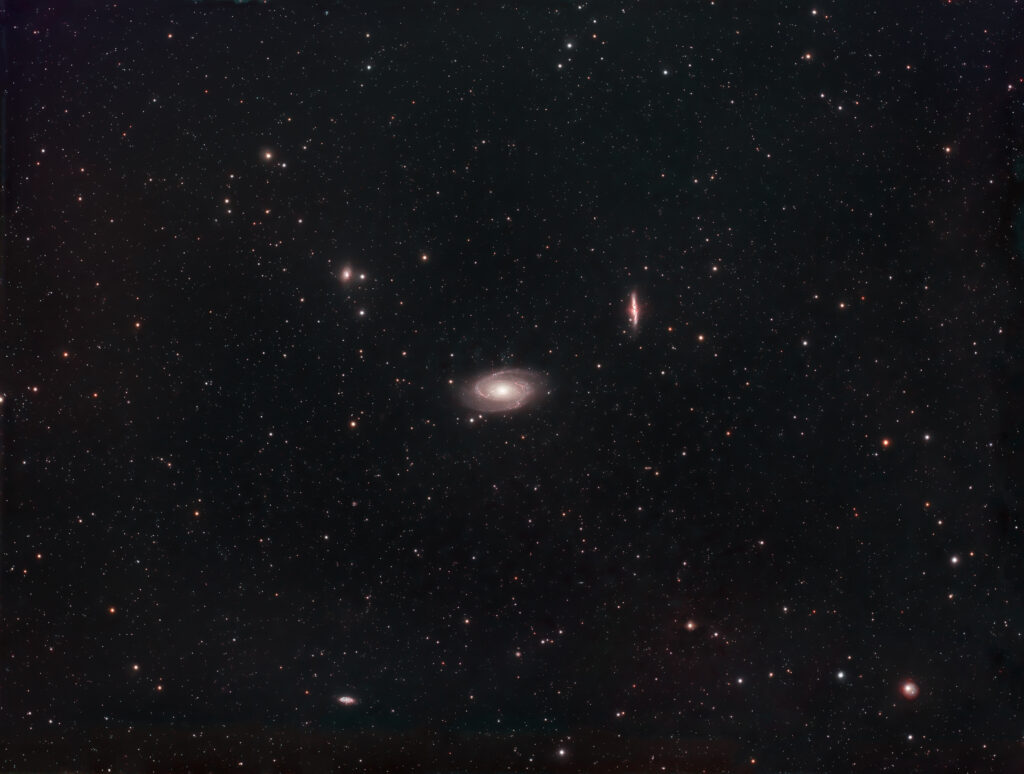
This portion of sky is so rich of galaxies; PGC annotation (PixInSight) gives an idea of the richness of field
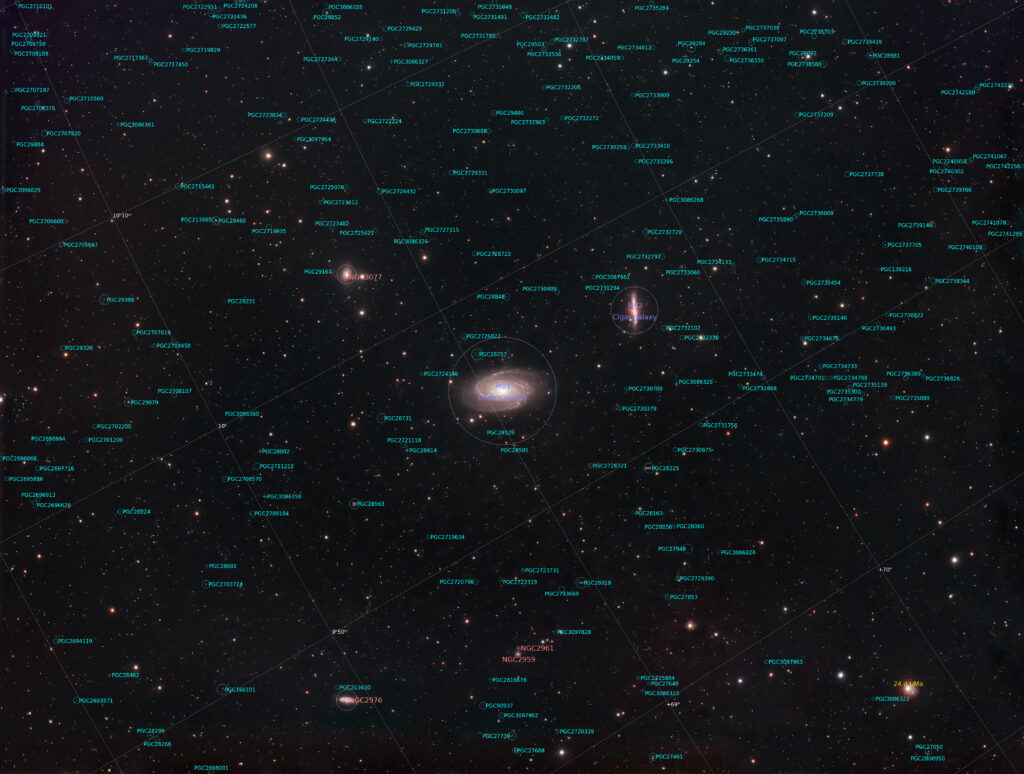
I thus start to try some crop solution for better framing and focusing the final image. At first I cropped a squared and a vertical version to catch in the field also NGC2976, NGC2961 and NGC2959.
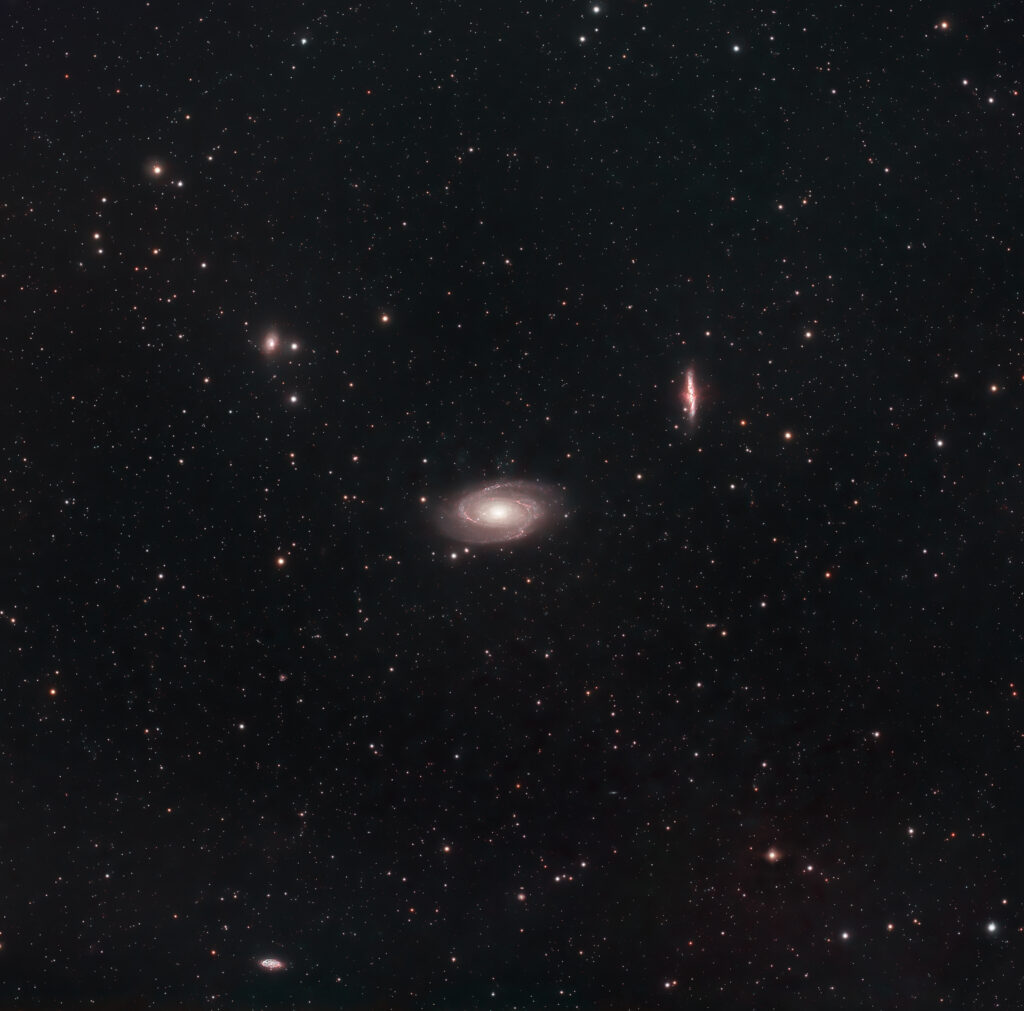
and a vertical version, both to catch in the field also NGC2976, NGC2961 and NGC2959.
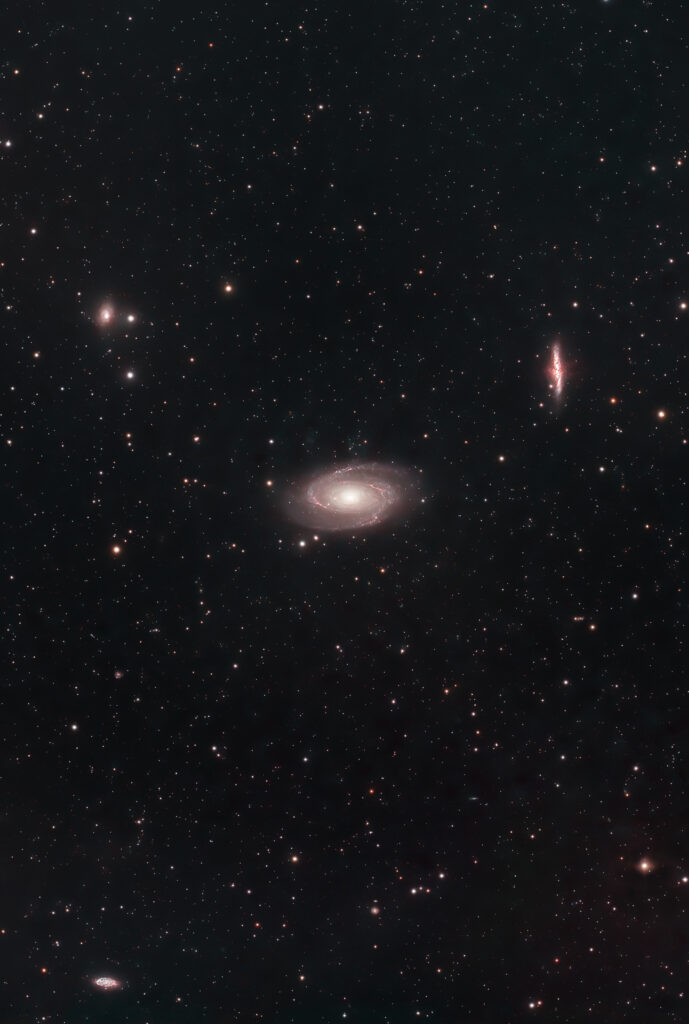
Finally, having a pretty good quality noise-free image of Boode Galaxy, I try to focus about M81 and M82 with a deeper cropping for an orizontal composition, trying to dispose M81 and friends according to 3/4 grids basic composition rule.
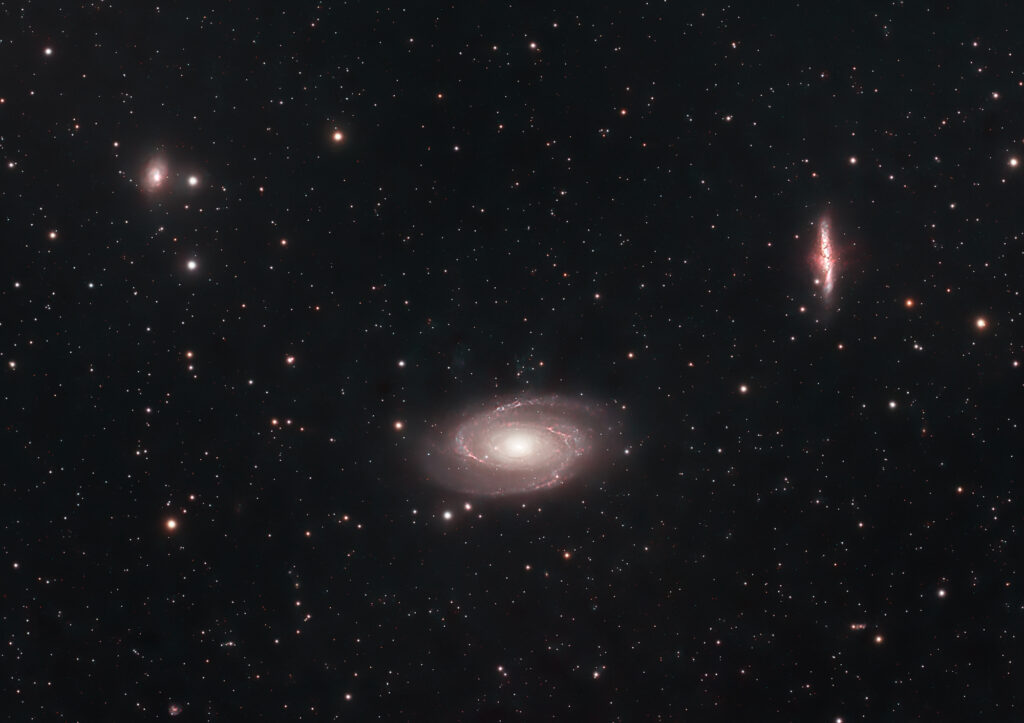
Photoshop master, with layers groups and 3 main crops framing guides available here: https://e.pcloud.link/publink/show?code=XZn4TBZKeNsSX7lsnzG3xS7Ooegd0CuL1sk
Complete framleist available here: https://e.pcloud.link/publink/show?code=XZjmTBZ6C3SQ5yN4KzucAQCTxK8fH266U7y

